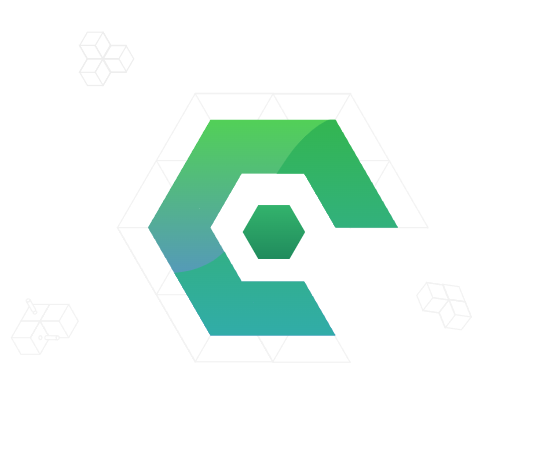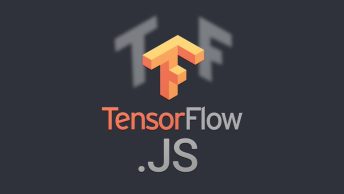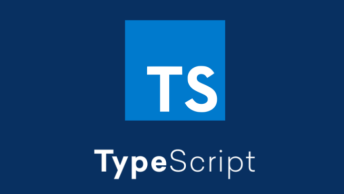参考资料:
1.1 说明
本示例针对官方的快速入门项目进行了修改和完善,主要针对以下内容进行了修改。
- 文档中的配置参数使用
exports格式,但新版本的egg.js配置文件内容均为module.exports格式,同时增加了config变量,本文对项目中所有导出内容进行了修改与更新; - 原示例中的新闻栏目部署在firebase上,由于网络原因,在调试时可能无法访问,此外,由于该网站接口更新,快速入门教程无法正常访问新闻网站接口。因此,本项目使用一个json文件来模拟数据源,并修改了示例程序中的代码来更新访问。要运行数据源,需要全局安装
json-server,npm install json-server -g,在data目录下运行以下命令以启用数据源,json-server --watch db.json。 - 可以直接
clone项目并运行,也可以按照以下文档进行。
1.2 项目搭建
我们推荐直接使用脚手架,只需几条简单指令,即可快速生成项目(npm >=6.1.0),使用脚手架过程中,可能需要按提示输入项目名等内容。
mkdir egg-example && cd egg-example npm init egg --type=simple npm i
启动项目
npm run dev #打开浏览器访问 http://localhost:7001
也可以按照以下步骤。
mkdir egg-example cd egg-example npm init npm i egg --save npm i egg-bin --save-dev
添加 npm scripts 到 package.json:
{
"name": "egg-example",
"scripts": {
"dev": "egg-bin dev"
}
}
1.3 编写Controller
如果你熟悉 Web 开发或 MVC,肯定猜到我们第一步需要编写的是 Controller 和 Router。
// app/controller/home.js
const Controller = require('egg').Controller;
class HomeController extends Controller {
async index() {
this.ctx.body = 'Hello world';
}
}
module.exports = HomeController;
在路由文件中配置路由映射:
// app/router.js
module.exports = (app) => {
const { router, controller } = app;
router.get('/', controller.home.index);
};
在配置文件中修改配置文件,此处按照 module.exports格式进行了更新:
// config/config.default.js config.keys = appInfo.name + '_1648957490150_7277';
1.4 静态资源
Egg 内置了 static 插件,线上环境建议部署到 CDN,无需该插件。
static 插件默认映射 /public/* -> app/public/* 目录
此处,我们把静态资源都放到 app/public 目录即可:
app/public ├── css │ └── news.css
1.5 模板渲染
绝大多数情况,我们都需要读取数据后渲染模板,然后呈现给用户。故我们需要引入对应的模板引擎。
框架并不强制你使用某种模板引擎,只是约定了 View 插件开发规范,开发者可以引入不同的插件来实现差异化定制。
在本例中,我们使用 Nunjucks 来渲染,先安装对应的插件egg-view-nunjucks :
$ npm i egg-view-nunjucks --save
在插件文件中开启插件:
// config/plugin.js
module.exports = {
// had enabled by egg
// static: {
// enable: true,
// }
nunjucks:{
enable: true,
package: 'egg-view-nunjucks',
}
};
在配置文件中修改配置,这里将原教程的模板后缀.tpl修改为nunjucks默认的.nj。
// config/config.default.js
config.view = {
efaultViewEngine: 'nunjucks',
mapping: {
'.nj': 'nunjucks',
},
};
注意:是 config 目录,不是 app/config!
为列表页编写模板文件,放置在 app/view 目录下
<!-- app/view/news/list.nj -->
<html>
<head>
<title>Hacker News</title>
<link rel="stylesheet" href="/public/css/news.css" />
</head>
<body>
<ul class="news-view view">
{% for item in list %}
<li class="item">
<a href="{{ item.url }}">{{ item.title }}</a>
</li>
{% endfor %}
</ul>
</body>
</html>
添加 Controller 和 Router
// app/controller/news.js
const Controller = require('egg').Controller;
class NewsController extends Controller {
async list() {
/*const dataList = {
list: [
{ id: 1, title: 'this is news 1', url: '/news/1' },
{ id: 2, title: 'this is news 2', url: '/news/2' },
],
};*/
const ctx=this.ctx;
const page=ctx.query.page||1;
const newsList=await ctx.service.news.list(page);
// await console.log(newsList);
await ctx.render('news/list.nj',{list: newsList});
// await this.ctx.render('news/list.nj', dataList);
}
}
module.exports = NewsController;
在路径中添加以下路径
// app/router.js
module.exports = (app) => {
const { router, controller } = app;
router.get('/', controller.home.index);
router.get('/news', controller.news.list);
};
启动浏览器,访问 http://localhost:7001/news 即可看到渲染后的页面。
1.6 编写 service
在实际应用中,Controller 一般不会自己产出数据,也不会包含复杂的逻辑,复杂的过程应抽象为业务逻辑层 Service。我们来添加一个 Service 抓取 Hacker News 的数据 ,该部分内容使用data目录下的db.json文件内容进行替换,需要通过json-server启动服务。
// app/service/news.js
const Service = require('egg').Service;
class NewsService extends Service {
async list(page = 1) {
// read config
const { serverUrl, pageSize } = this.config.news;
// use build-in http client to GET hacker-news api
const data = await this.ctx.curl(
`${serverUrl}/topstories`,
{
// data: {
// orderBy: '"$key"',
// startAt: `"${pageSize * (page - 1)}"`,
// endAt: `"${pageSize * page - 1}"`,
// },
dataType: 'json',
},
);
// await console.log('result is ' +JSON.stringify(data.data));
// parallel GET detail
const newsList = await Promise.all(
// Object.keys(idList).map((key) => {
// const url = `${serverUrl}/item/${idList[key]}.json`;
// console.log('result is ' +JSON.stringify(data.data));
data.data.map(element => {
const url = `${serverUrl}/${element}`;
return this.ctx.curl(url, { dataType: 'json' });
}),
);
return newsList.map((res) => res.data);
}
}
module.exports = NewsService;
框架提供了内置的 HttpClient 来方便开发者使用 HTTP 请求。
还需增加 app/service/news.js 中读取到的配置:
// config/config.default.js
// 添加 news 的配置项
config.news={
pageSize:5,
serverUrl:'http://localhost:3000',
};
1.7 编写扩展
遇到一个小问题,我们的资讯时间的数据是 UnixTime 格式的,我们希望显示为便于阅读的格式。框架提供了一种快速扩展的方式,只需在 app/extend 目录下提供扩展脚本即可,具体参见扩展。 在这里,我们可以使用 View 插件支持的 Helper 来实现:
$ npm i moment --save
// app/extend/helper.js
const moment = require('moment');
exports.relativeTime = (time) => moment(new Date(time * 1000)).fromNow();
在模板里面使用:
<!-- app/view/news/list.tpl -->
{{ helper.relativeTime(item.time) }}
1.8 编写 Middleware
假设有个需求:我们的新闻站点,禁止百度爬虫访问。聪明的同学们一定很快能想到可以通过 Middleware 判断 User-Agent,如下:
// app/middleware/robot.js
// options === app.config.robot
module.exports = (options, app) => {
return async function robotMiddleware(ctx, next) {
const source = ctx.get('user-agent') || '';
const match = options.ua.some((ua) => ua.test(source));
if (match) {
ctx.status = 403;
ctx.message = 'Go away, robot.';
} else {
await next();
}
};
};
// config/config.default.js
// add middleware robot
exports.middleware = ['robot'];
// robot's configurations
exports.robot = {
ua: [/Baiduspider/i],
};
现在可以使用 curl http://localhost:7001/news -A “Baiduspider” 看看效果。或者使用vscode 的REST Client插件,利用data目录下的client.http文件进行调试。
1.8 配置文件
写业务的时候,不可避免的需要有配置文件,框架提供了强大的配置合并管理功能:支持按环境变量加载不同的配置文件,如 config.local.js, config.prod.js 等等。应用/插件/框架都可以配置自己的配置文件,框架将按顺序合并加载。具体合并逻辑可参见配置文件。
// config/config.default.js
exports.robot = {
ua: [/curl/i, /Baiduspider/i],
};
// config/config.local.js
// only read at development mode, will override default
exports.robot = {
ua: [/Baiduspider/i],
};
// app/service/some.js
const Service = require('egg').Service;
class SomeService extends Service {
async list() {
const rule = this.config.robot.ua;
}
}
module.exports = SomeService;
1.9 单元测试
单元测试非常重要,框架也提供了 egg-bin 来帮开发者无痛的编写测试。测试文件应该放在项目根目录下的 test 目录下,并以 test.js 为后缀名,即 {app_root}/test/**/*.test.js。
// test/app/middleware/robot.test.js
const { app, mock, assert } = require('egg-mock/bootstrap');
describe('test/app/middleware/robot.test.js', () => {
it('should block robot', () => {
return app
.httpRequest()
.get('/')
.set('User-Agent', 'Baiduspider')
.expect(403);
});
});
然后配置依赖和 npm scripts:
{
"scripts": {
"test": "egg-bin test",
"cov": "egg-bin cov"
}
}
$ npm i egg-mock --save-dev 执行测试: $ npm test






